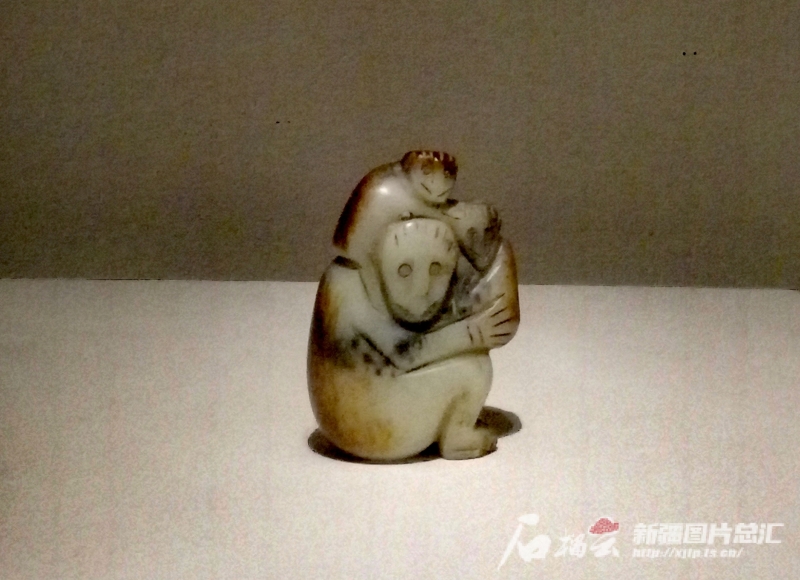Shiliuyun-Xinjiang Daily (Reporter Jia Chunxia) news: An older jade monkey sitting in a squat position, with a baby monkey nestled in its arms and another one perching on its shoulder, symbolizes "generations of noble titles," attracting tourists to take photos eagerly. This Tang Dynasty Hetian jade monkey is one of Hotan Museum's "crown jewels," and the most precious treasure of the museum is displayed at the hall of "Five Stars Rise in the East: Hetian History and Culture Exhibition" in the Hotan Museum in Hotan City, Hotan Prefecture, northwest China's Xinjiang Uygur Autonomous Region.

Photo shows the Tang Dynasty Hetian jade monkey displayed at the hall of "Five Stars Rise in the East: Hetian History and Culture Exhibition" in the Hotan Museum in Hotan City, Hotan Prefecture, northwest China's Xinjiang Uygur Autonomous Region. (Photo by Shiliuyun-Xinjiang Daily/ Jia Chunxia)
"The jade comes from Kungang, and the Chinese jade culture has a long history in Hotan Prefecture, which is the starting point of the 'Jade Road,' and Hetian jade has been continuously transported to the Central Plains since the Shang and Zhou dynasties. The Central Plains dynasties have always attached great importance to the mining of Hetian jade. As an important medium connecting the Central Plains and the Western Regions, it gradually became the core of the ritual systems of various dynasties and an important part of Chinese jade culture," said Zhang Huajie, curator of the Hotan Museum. This jade monkey, about the size of a palm, is carved from the best white jade (mutton-fat jade) among Hetian jade. It boasts unique design, natural and vivid craftsmanship, and is full of charm, serving as a carrier of Chinese jade culture.
As the saying goes, "Thirty percent material and seventy percent craftsmanship make a perfect jade." Although the mining of Hetian jade has a long history, and pre-Qin literature, such as The Classic of Mountains and Seas and Records of Emperor Mu's Tours, record the fact that Hetian produces jade, it was only in the Tang Dynasty that the jade carving industry began to emerge in Hotan, but the craftsmanship was significantly inferior to that of the Central Plains. Experts believe that this delicately designed and finely crafted jade monkey is likely to have been created by jade carvers from the Central Plains.
With museums being popular, museums' cultural and creative products have also frequently gained popularity. The Hotan Museum has developed a series of cultural and creative products based on its collection, including the jade monkey and other artifacts. These cultural and creative products, such as refrigerator magnets, bookmarks, and keychains, are filled with historical and cultural connotations while also being cute and fashionable, and have become increasingly popular among young people.
Zhang Huajie said that in the future, the museum will continue to strengthen the research and design of cultural and creative products, so that more people can become interested in cultural relics through these products, and then approach the relics themselves to understand the stories, culture, and history behind them, truly making the cultural relics "come alive."
(A written permission shall be obtained for reprinting, excerpting, copying and mirroring of the contents published on this website. Unauthorized aforementioned act shall be deemed an infringement, of which the actor shall be held accountable under the law.)









